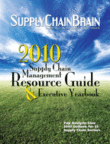
Visit Our Sponsors |
|
|
|
|
|
|
|
|
|
|
|
|
|
|
|
|
|
|
|
|
|
|
|
|
|
|
|
|
|
|
|
|
|
|
|
|
|
|

In Aberdeen's study, Sales and Operations Planning: Integrate With Finance and Improve Revenue, 63 percent of respondents indicated the finance organization is involved in the S&OP process whereas only 4 percent say finance drives the S&OP process. Best-in-Class companies focus more on a holistic consideration of supply, demand and finance while the vast majority still grapple with traditional supply chain issues (such as managing demand forecasts within the S&OP plan). Industry Average and Laggard companies want to forecast their demand and manage their supply constraints better. An overwhelming majority (76 percent) of finance professionals indicated that their top strategic action is to integrate financial planning and budgeting with S&OP.
Best-in-Class companies are:
• More than twice as likely to consider major constraints during supply/demand balancing.
• Integrating finance with supply and demand. The key advantage exists in performing gap analysis between the financial and S&OP plans and taking corrective action. Financial modeling needs to be very deep in order to properly consider and evaluate the impact on working capital, profits, cash flow and other metrics. Also, financial modeling must replicate the company's reporting structure in order to feed directly into the budgeting and planning process.
• Inventory management. Forty-two percent of Laggards have indicated strong process capabilities in setting safety-stock targets for inventory during the S&OP process, versus 63 percent of Best-in-Class.
The Outlook
More than 70 percent still indicate spreadsheets are the key enabler for S&OP. However, Aberdeen research finds there is a renewed focus in the industry towards coming up with specialized modules that address the Integrated Business Planning-related solution areas of S&OP. IBP areas have traditionally been in the realm of management consultants who created custom spreadsheet applications as part of a larger transformation engagement. However, this approach is not scalable given the large number of SKUs involved and the dynamic nature of business processes that continue to evolve at fast rates.
RELATED CONTENT
RELATED VIDEOS
Timely, incisive articles delivered directly to your inbox.






